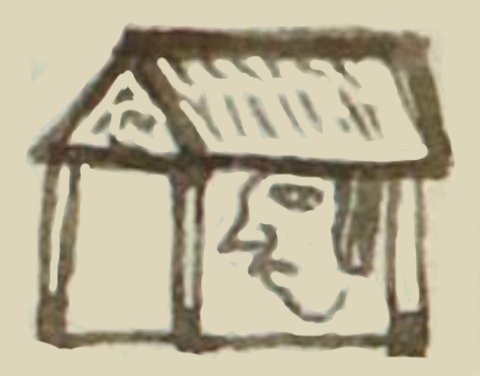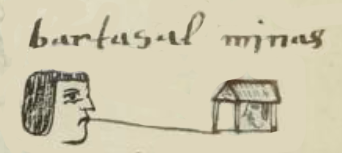Minas (MH839r)
This black-line drawing of the simplex glyph for the personal name Minas (perhaps “Mines”) is attested here as a man’s name. The glyph shows an architectural structure with probably wooden posts and what may be a thatched roof. Inside the structure is a man’s head in profile, looking toward the viewer’s left.
Stephanie Wood
There is a Nahuatl term mina, which means to shoot, stab, or poke someone, but nothing in this hieroglyph suggests this meaning here. The presence of the head of a man is unclear. The glyph could be a compound if there is a reading for the head inside the structure. There are currently (January 2025) no other glyphs relating to mining, but there are many relating to metal objects in the culture, some pre-contact and some introduced during the Spanish colonial period. Here is a search result for metals.
Stephanie Wood
bartasal minas
Baltazar Minas
Stephanie Wood
1560
Jeff Haskett-Wood
minas, metales, nombres de hombres

minas, a Spanish word meaning mines that entered Nahuatl, https://nahuatl.wired-humanities.org/content/minas
Minas
Stephanie Wood
Matrícula de Huexotzinco, folio 839r, World Digital Library, https://www.loc.gov/resource/gdcwdl.wdl_15282/?sp=752&st=image.
This manuscript is hosted by the Library of Congress and the World Digital Library; used here with the Creative Commons, “Attribution-NonCommercial-ShareAlike 3.0 License” (CC-BY-NC-SAq 3.0).

